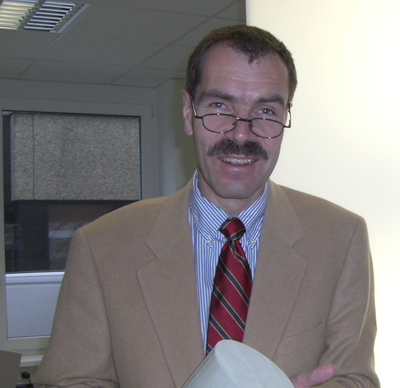
Technology developed by German company Argillon is claimed to cut nitrogen oxides by as much as 95%.
According to the company, selective catalytic reduction or SCR catalytic converters are the most effective means of reducing nitrous oxides in exhaust fumes created by the burning of fossil fuels. Its SINOx Emissions Control Systems allow an engine to be tuned for maximum fuel economy and performance while reducing NOx and particulate emissions, says the company. Argillon is the main supplier of SCR catalysts for DaimlerChrysler and IVECO trucks. An investment of over 20 million Euro at the company’s headquarters in Redwitz, Germany, has raised production capacity by more than 50%.
Argillon is part of DEMAG Holding based in Luxembourg. The American Private Equity Company Kohlberg Kravis Roberts & Co. has an 81% and Siemens a AG 19% stake in the company.
Automotive Industries (AI) spoke to Dr. Ulrich Wölfel, Director Business Unit Automotive, Argillon.
AI: How popular is your SCR technology with automotive OEMs?
Wölfel: After putting huge efforts into engine measures to reduce NOx, most of the European OEMs decided to use exhaust gas after treatment to comply with EURO IV and later NOx standards rather than using EGR and necessarily particulate filters. The reason for fitting NOx abatement catalysts to their trucks is better fuel economy. NOx emissions are reduced well below the limits by Argillon’s SINOx SCR catalyst.
AI: What makes SINOx competitive?
Wölfel: There are a lot of demands for a catalytic converter used in a truck. First of all, the NOx reduction performance has to be superior in order to follow the highly transient operation of a truck engine concerning exhaust gas mass flow and temperature. On the other hand, the lifetime requirement is 1 million kilometers. But the real difference is the constitution of the Argillon catalyst. It is homogeneously extruded and no precious metals are used. Hence, the base material is active itself and does not need a coating. The overall mass of active material is much higher compared to a coated catalyst and results in a higher activity at low exhaust gas temperature which is essential in today’s test cycles and on-road driving behavior. Furthermore, there is no coating to flake off under severe conditions.
AI: What are your plans for expanding your SINOx emissions control products in the automotive industry in Asia?
Wölfel: Argillon is well prepared to support Asian companies to meet new emission regulations. Together with our partner Transcapital International (TCI) of Shanghai we are able to service the Asian market.
AI: Please give us examples of how you modified your SINOx catalysts to suit an automotive client.
Wölfel: We designed the catalyst for the truck application in particular. The most obvious differences are the higher cell density compared to catalysts for power plants and the diameter dimensions. Fine tuning was necessary to balance high NOx conversion performance and fast transient response for corresponding operation conditions. The acceptance was based on different tests performed by the OEMs concerning thermal and mechanical strength as well as NOx abatement activity versus temperature.
AI: What modifications are you working on to further improve your SCR technology? How much of your revenues do you keep aside for R&D?
Wölfel: Again, our work is guided by the requirements of our customers. There are somewhat different demands in other parts of the world, especially in North America. With future emission legislation there will be the necessity to combine the catalyst with a particulate filter system. This may result in an even higher temperatures. The combination of future requirements will require new formulae which we also develop today. This R&D is focused always on our customers and markets. Our R&D expenditures amount approx. 6% per cent of revenues.













More Stories
Some Ways How Motorists End Up in Collisions at U-Turns
Maximise Margins with Proven PPF Tactics
Finding the Car Boot Release Button – Tips and Tricks